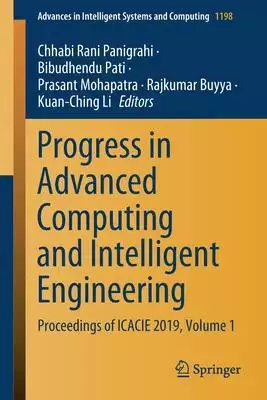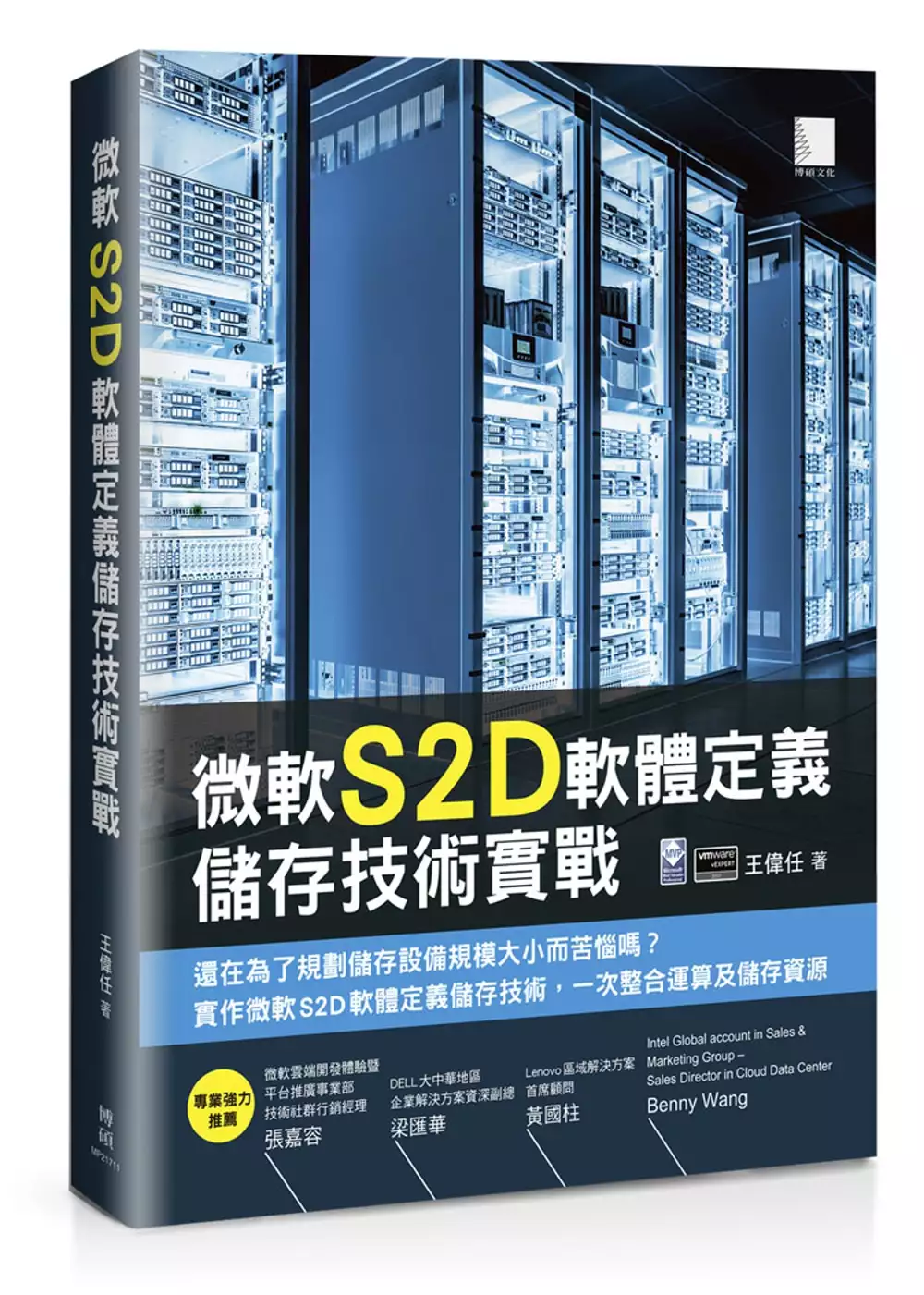intel virtualization的問題,透過圖書和論文來找解法和答案更準確安心。 我們找到下列懶人包和總整理
intel virtualization的問題,我們搜遍了碩博士論文和台灣出版的書籍,推薦寫的 Progress in Advanced Computing and Intelligent Engineering: Proceedings of Icacie 2019, Volume 1 和王偉任的 微軟S2D軟體定義儲存技術實戰都 可以從中找到所需的評價。
這兩本書分別來自 和博碩所出版 。
國立臺灣科技大學 電子工程系 鄭瑞光所指導 Jonathan的 用於整合開放基站開源軟體社群分散單元的支援工具 (2021),提出intel virtualization關鍵因素是什麼,來自於O-RAN Software Community (OSC)、Message Sequence Chart、O-RAN Distributed Unit (O-DU)。
而第二篇論文國立陽明交通大學 網路與資訊系統博士學位學程 吳育松、黃彥男所指導 李泓暐的 基於運行環境事件之程式行為萃取及其應用 (2021),提出因為有 程式分析、程式行為、事件追踪、應用程式執行時間預測、異常偵測的重點而找出了 intel virtualization的解答。
Progress in Advanced Computing and Intelligent Engineering: Proceedings of Icacie 2019, Volume 1

為了解決intel virtualization 的問題,作者 這樣論述:
Dr. Chhabi Rani Panigrahi is an Assistant Professor in the Department of Computer Science at the Rama Devi Women’s University, Bhubaneswar, India. Dr. Panigrahi has received her doctoral degree from Indian Institute of Technology Kharagpur, India. Her research interests include software testing and
mobile cloud computing. She has more than 19 years of teaching and research experience, and has published several scholarly articles in journals and conferences of international repute. Dr. Panigrahi is the author of a textbook and a few edited books. She is a life member of the Indian Society of Te
chnical Education (ISTE) and a member of IEEE and the Computer Society of India (CSI).Dr. Bibudhendu Pati is the Associate Professor and Head, in the Department of Computer Science at Rama Devi Women’s University, Bhubaneswar, India. He received his Ph.D. degree from IIT Kharagpur. Dr. Pati has 22 y
ears of experience in teaching, research, and industry. His areas of research include wireless sensor networks, cloud computing, big data, Internet of things, and networks virtualization. He is a life member of the Indian Society of Technical Education (ISTE), senior member of IEEE, member of ACM, a
nd life member of Computer Society of India (CSI). He has published several papers in leading international journals, conference proceedings, and books. He is associated with organizing different reputed international conferences.Prof. Prasant Mohapatra is serving as the Vice Chancellor for Research
at the University of California, Davis. He is also a Professor in the Department of Computer Science and served as the Dean and Vice Provost of Graduate Studies during 2016-18. He was the Department Chair of Computer Science during 2007-13. In the past, Dr. Mohapatra has also held Visiting Scientis
t positions at Intel Corporation, Panasonic Technologies, Institute of Infocomm Research (I2R), Singapore, and National ICT Australia (NICTA). Dr. Mohapatra received his doctoral degree from Penn State University in 1993, and received an Outstanding Engineering Alumni Award in 2008. He is also the r
ecipient of Distinguished Alumnus Award from the National Institute of Technology, Rourkela, India. Dr. Mohapatra received an Outstanding Research Faculty Award from the College of Engineering at the University of California, Davis. He received the HP Labs Innovation awards in 2011, 2012, and 2013.
He is a Fellow of the IEEE and a Fellow of AAAS. Dr. Mohapatra’s research interests are in the areas of wireless networks, mobile communications, cybersecurity, and Internet protocols. He has published more than 350 papers in reputed conferences and journals on these topics. Dr. Mohapatra’s research
has been funded through grants from the National Science Foundation, US Department of Defense, US Army Research Labs, Intel Corporation, Siemens, Panasonic Technologies, Hewlett Packard, Raytheon, and EMC Corporation.Prof. Rajkumar Buyya is a Redmond Barry Distinguished Professor and Director of th
e Cloud Computing and Distributed Systems (CLOUDS) Laboratory at the University of Melbourne, Australia. He is also serving as the founding CEO of Manjrasoft, a spin-off company of the university, commercializing its innovations in cloud computing. He served as a Future Fellow of the Australian Rese
arch Council during 2012-2016. He has authored over 625 publications and seven textbooks including "Mastering Cloud Computing" published by McGraw Hill, China Machine Press, and Morgan Kaufmann for Indian, Chinese, and international markets, respectively. He also edited several books including "Clou
d Computing: Principles and Paradigms" (Wiley Press, USA, February 2011). He is one of the highly cited authors in computer science and software engineering worldwide (h-index=123, g-index=271, 79,000+ citations). "A Scientometric Analysis of Cloud Computing Literature" by German scientists ranked D
r. Buyya as the World’s Top-Cited (#1) Author and the World’s Most-Productive (#1) Author in Cloud Computing. Dr. Buyya is recognized as a "Web of Science Highly Cited Researcher" for three consecutive years since 2016, a Fellow of IEEE, and Scopus Researcher of the Year 2017 with Excellence in Inno
vative Research Award by Elsevier for his outstanding contributions to cloud computing. Software technologies for grid and cloud computing developed under Dr. Buyya’s leadership have gained rapid acceptance and are in use at several academic institutions and commercial enterprises in 40 countries ar
ound the world. Dr. Buyya has led the establishment and development of key community activities, including serving as foundation Chair of the IEEE Technical Committee on Scalable Computing and five IEEE/ACM conferences. These contributions and international research leadership of Dr. Buyya are recog
nized through the award of "2009 IEEE Medal for Excellence in Scalable Computing" from the IEEE Computer Society TCSC. Manjrasoft’s Aneka Cloud technology developed under his leadership has received "2010 Frost & Sullivan New Product Innovation Award". Recently, Dr. Buyya received "Mahatma Gandhi Aw
ard" along with Gold Medals for his outstanding and extraordinary achievements in information technology field and services rendered to promote greater friendship and India-International cooperation. He served as the founding Editor-in-Chief of the IEEE Transactions on Cloud Computing. He is current
ly serving as Co-Editor-in-Chief of Journal of Software: Practice and Experience, which was established 50 years ago. For further information on Dr. Buyya, please visit his cyberhome: www.buyya.comKuan-Ching Li is a Distinguished Professor in the Dept of Computer Science and Information Engineering
(CSIE) at Providence University, Taiwan, where he also serves as the Director of the High-Performance Computing and Networking Center. He is the Editor in Chief of the Connection Science (Taylor & Francis) and serves as an associate editor for several leading journals. Also, he has been actively inv
olved, in a variety of capacities, in the organization of many national and international conferences. He published more than 300 scientific papers and articles and is co-author, or co-editor of more than 25 books published by leading publishers. His research interests include parallel and distribut
ed computing, Big Data, and emerging technologies. Professor Li is a Fellow of IET and a senior member of the IEEE.
intel virtualization進入發燒排行的影片
本影片是微星MSI主機板如何開啟VT功能!
順便簡單如何去看CPU是否支援VT~
VT檢測下載位置:https://www.azofreeware.com/2015/09/cpu-v.html
【BIGWEI愛教學】播放清單:https://goo.gl/LMNeV7
相關影片
Asus開啟VT讓您手機模擬器比較順暢:https://youtu.be/4Il7F0xlvOs
2021年新版本安裝教學:https://youtu.be/cChfNu-CIqY
雷電模擬器安裝簡易設定教學:https://youtu.be/_znkdEe2XN8
雷電模擬器簡易按鍵設定教學:https://youtu.be/CF9FUsnKl8M
贊助商品遊戲E-mail:[email protected]
Instagram IG:iweibow
臉書粉絲:https://www.facebook.com/ilovebigwei/
#教學 #開啟VT #虛擬化技術 #Virtualization #Technology #Intel #BIOS #微星MSI
用於整合開放基站開源軟體社群分散單元的支援工具
為了解決intel virtualization 的問題,作者Jonathan 這樣論述:
O-RAN 軟體社群 (O-RAN Software Community, OSC)致力於開發建構開放式無線接取網路(Open RAN, O-RAN)的開源軟體模組。OSC 涵蓋的範圍包括文件、測試、整合和其他軟體模組的部署,以利於開源軟體項目的開發、部署、操作或使用。在本論文中,我們開發了三個工具來支援 OSC 計畫的文件化、開發和部署。我們使用O-RAN 分佈式單元 (O-DU Low 和 O-DU High) 計畫為例,來展示如何使用這些工具來簡化相關工作。我們開發的文件化工具,可以將廠商現有以Word格式紀錄的技術文件,根據OSC社群的規範,轉換成reStructuredText (
RST) 格式。我們在O-DU Low計畫中,使用這個工具來協助英特爾來轉化技術文件。此外,我們也提出一個可以自動產生訊息序列圖(Message Sequence Chart, MSC)的開發工具,它可以將紀錄網路流量的封包捕獲 (Packet Capture, PCAP) 檔案,在 HackMD(一個群體協作軟體)平台上,自動畫出訊息序列圖。我們使用該工具分別分析驗證了O-DU High 計畫的 F1 和 E2 介面,以及O-DU Low 計畫的開放式前傳介面(Open Fronthaul Interface, FHI)的訊息交換流程。最後,我們還提出了一個部署工具,它使用系統腳本方法來完成
伺服器的自動化配置,我們O-DU High模組為例,展示如何使用此工具來減少手動部署的工作量和整合時間。
微軟S2D軟體定義儲存技術實戰

為了解決intel virtualization 的問題,作者王偉任 這樣論述:
還在為了規劃儲存設備規模大小而苦惱嗎? 實作微軟S2D軟體定義儲存技術,一次整合運算及儲存資源 Microsoft S2D軟體定義儲存技術,最小運作規模只要2台S2D叢集節點主機,即可建構出不輸中階儲存設備的IOPS儲存效能,並且S2D單一叢集最大規模16台及高達600萬IOPS儲存效能。同時,整合S2D HCI超融合部署架構,能夠一次解決VM虛擬主機和Container容器及其他工作負載,在運算及儲存資源方面整合的煩惱。 ★SDDC軟體定義資料中心願景:了解SDDC願景中重要的組成元件,包括SDC軟體定義運算、SDS軟體定義儲存、SDN軟體定義網路。 ★S2D部
署模式及環境需求:深入剖析S2D部署模式HCI超融合式與融合式運作架構的差別,以及建構S2D環境時應該採用RAID還是HBA、採用SSD或HDD、採用一般TCP/IP或RDMA、採用NTFS或ReFS檔案系統等議題。 ★S2D運作架構:深入剖析S2D底層運作架構元件,例如:SSB軟體式儲存匯流排、SSB頻寬管理機制、SBC儲存匯流排快取機制、Storage Pool、ReFS Real-Time Tiering、SMB Direct、RoCE、iWARP、Infiniband、SMB MultiChannel等技術內容。 ★規劃設計最佳化S2D運作架構:一步一步帶領你挑選CPU處理
器、記憶體、NVMe快閃儲存、SSD固態硬碟、HBA硬碟控制器、RDMA網路卡、10GbE網路交換器、了解SSD與HDD比例原則、S2D叢集大/中/小型運作規模等最佳配置建議。 ★實戰S2D環境建置:手把手帶領你建構S2D運作環境,包括安裝Windows Server 2016、設定10GbE網路交換器、啟用DCB/PFC特色功能、啟用SMB Direct(RDMA)、啟用SMB QoS原則、建立SET ( Switch Embedded Teaming )、檢查RDMA運作狀態、檢查SMB MultiChannel運作狀態、建立S2D叢集、啟用Storage Spaces Direct
機制、建立三向鏡像磁碟區、建立雙同位磁碟區、建立雙向鏡像磁碟區、建立單同位磁碟區、建立混合式復原磁碟區、部署VM虛擬主機、Storage Pool最佳化等最佳化組態配置。 ★IOPS效能測試:從了解IOPS儲存效能的估算開始,慢慢深入如何進行IOPS儲存效能測試,並透過開源工具VMFleet進行S2D環境IOPS儲存效能測試。 ★S2D維運管理免煩惱:深入了解S2D如何因應各式各樣硬體故障事件、如何查詢S2D運作健康狀態、S2D叢集節點主機如何進入維護模式、如何整合CAU叢集感知更新機制安裝微軟最新安全性更新、實戰水平擴充S2D叢集運作規模(2台→3台→4台)、實戰擴充CSVFS磁
碟區空間等維運管理議題。 【定義簡介】 軟體定義資料中心(Software Defined Data Center,SDDC) 根據Gartner的研究結果顯示,過往IT人員所熟知及打造Mode 1的現代化資料中心(Data Center Modernization)所遭遇的挑戰,主要在於管理及打造企業或組織中有關運算資源、儲存資源、網路資源、硬體設備、虛擬化技術⋯⋯等虛實整合。 隨著企業及組織朝向商業數位化模式不斷發展,知名的市調機構Gartner所屬分析師在2015下半年期間,針對100位企業及組織中負責領導IT基礎架構的主管調查結果顯示,有2/3以上的企業及組
織開始建構及整合Mode 2的敏捷式IT基礎架構(Infrastructure Agility)。 所謂「基礎架構敏捷化」(Infrastructure Agility),便是著重於IT基礎架構中「Mode 2」的部分也就是因應商業數位化的需求,這些範圍包括: ◎將敏捷(Agility)最佳實務概念,充分導入至現代化資料中心的IT基礎架構當中,讓工 作流程及技術人員能夠快速因應現在新興的商業數位化需求。 ◎深入了解各項使用案例、決策考量、微服務(Micro-Service)、容器引擎⋯⋯等最佳實務 概念。 ◎將單純的虛擬化運作環境,發展成軟體定義(Software-Def
ined)的基礎架構以達成敏捷 的目的,也就是打造「軟體定義資料中心」(Software-Defined Data Center,SDDC)。 ◎充份利用彈性的雲端基礎架構部署新世代應用程式(Next-Generation Applications)。 ◎建構邊緣資料中心(Edge Data Center)平台,以便因應商業數位化及IoT物聯網。 ◎加強巨量資料分析、Web應用程式、IoT物聯網⋯⋯等部署作業,以便因應現代化行動至 上的商務模式。 簡單來說,不管是Mode 1的現代化資料中心或是新興Mode 2的基礎架構敏捷化,在企業或組織的資料中心內硬體資源的組成,不外
乎就是「CPU、記憶體、儲存、網路」等4大硬體資源,而這4大硬體資源又可以簡單劃分為3大類也就是運算、儲存、網路。 那麼,接下來我們來看看Mode 2基礎架構敏捷化定義中,透過軟體定義(Software- Defined)的運作概念,如何將「運算、儲存、網路」等硬體資源,轉換成SDC軟體定義運算、SDS軟體定義儲存、SDN軟體定義網路,幫助企業及組織打造成快速因應商業數位化需求的強大IT 基礎架構,最終達成SDDC軟體定義資料中心的目標。 軟體定義運算(Software Defined Compute,SDC) 軟體定義運算(Software Defined Compu
te,SDC),與SDS軟體定義儲存及SDN軟體定義網路技術相較之下,為基礎架構硬體資源當中最為成熟的技術。事實上,許多企業及組織在建構軟體定義式的IT基礎架構時,最先投入的便是SDC軟體定義運算的部分。 然而,談到SDC軟體定義運算便無法不談到x86 伺服器虛擬化(x86 Server Virtualization) 技術,在x86伺服器虛擬化技術尚未風行前,企業及組織的應用程式及營運服務便直接運作在x86硬體伺服器上,這樣的運作架構雖然讓應用程式及營運服務,可以直接獨佔整台x86硬體伺服器所有硬體資源,所以能夠提供良好的工作負載能力。但是,卻容易產生「供應商鎖定」(Vendor
Lock-in)的情況,舉例來說,倘若原本的應用程式及營運服務運作於Dell硬體伺服器上,但是該台x86硬體伺服器發生故障損壞事件時,需要將其上的應用系統或營運服務遷移至它牌硬體伺服器時(例如:HPE或Lenovo)是非常困難的。 事實上,談到虛擬化技術一般IT管理人員通常都會聯想到VM虛擬主機,然而這個情況從2013年Docker的出現而發生重大的改變。其實,Docker並非是「容器」(Container)技術,而是一項用來管理及調度容器環境的技術,讓IT管理人員能夠不用費心處理容器的管理作業,便能達到輕量級作業系統虛擬化解決方案的目的。 微軟官方也在Windows Se
rver 2016雲端作業系統中,與Docker合作推出Windows Server Container及Hyper-V Container技術,讓Hyper-V虛擬化平台成為同時運作VM虛擬主機及Container容器的最佳運作環境,輕鬆幫助管理人員達成Bimodal IT的雙重IT基礎架構,幫助企業及組織在傳統及新興架構之間找到最佳平衡點。 軟體定義儲存(Software Defined Storage,SDS) 軟體定義儲存(Software Defined Storage,SDS),為企業及組織帶來儲存資源的潛在好處,便是能夠提升靈活性並降低整體維運成本。因此,企業及組織
的CXO們應尋找及確認能夠更好提供「總體擁有成本」(Total Cost of Ownership,TCO)的SDS軟體定義儲存解決方案,同時選擇的SDS解決方案必須具備效率及可擴充性等特性,以便因應不斷增加的資料量並且能夠擺脫儲存設備的硬體限制。 目前,在SDS軟體定義儲存解決方案市場中尚未有明確的市場領導者出現。雖然,SDS軟體定義儲存解決方案具備可程式性及自動化等好處,但是仍須考量對於「運算」及「網路」所造成的影響。同時,所建立的SDS儲存資源必須要能夠融入IT基礎架構中而非再以孤島的方式運作。 在微軟新世代Windows Server 2016雲端作業系統當中,SD
S軟體定義儲存技術是由Windows Server 2012 R2當中的Storage Spaces技術演化而來,在Windows Server vNext開發時期稱為Storage Spaces Shared Nothing,在Windows Server 2016的正式名稱則為S2D(Storage Spaces Direct)。 軟體定義網路(Software Defined Network,SDN) 根據CIO的調查結果顯示,有86%的企業及組織CIO正計畫將內部資料中心及基礎架構進入Bimodal IT環境(相較於往年增加20%),透過將過去3層式網路架構遷移至Spin
e- Leaf網路架構讓整體網路環境簡單化,並結合軟體定義網路(Software Defined Network,SDN)技術, 以SDN Network Control Plane來管理Mode 2的資料中心, 以便因應東-西(East-West)向的網路流量,並採用模組化架構以便輕鬆進行自動化部署,同時結合Ansible、Puppet、Chef 等自動化組態設定工具,讓企業及組織的網路架構更適合DevOps環境,並往基礎架構即程式碼(Infrastructure as Code)的方向進前。 微軟新世代Windows Server 2016雲端作業系統當中,「軟體定義網路」(So
ftware Defined Network,SDN)技術內的重要角色「網路控制器」(Network Controller),以及透過SDN技術管理「網路功能虛擬化」(Network Functions Virtualization,NFV)運作環境, 進而幫助企業或組織在資料中心內建構網路虛擬化環境。 專業強力推薦 ◎微軟雲端開發體驗暨平台推廣事業部技術社群行銷經理~張嘉容 ◎DELL大中華地區企業解決方案資深副總~梁匯華 ◎Lenovo區域解決方案首席顧問~黃國柱 ◎Intel Global account in Sales & Marketing Group
– Sales Director in Cloud Data Center~Benny Wang
基於運行環境事件之程式行為萃取及其應用
為了解決intel virtualization 的問題,作者李泓暐 這樣論述:
由於電腦科技逐漸在各處都可見其身影和日益複雜的電腦系統,了解那些在電腦系統中的程式行為無可避免地成為一個重要的議題。鑒於在沒有程式輸入下僅靠程式原始碼來分析程式是有困難的,又或者靠程式機器碼,但即使是一個簡單程式,其機器碼也相當複雜而難以分析,本篇論文轉而藉由觀測那些在程序(運行中的程式)所觸發的事件來分析程式行為。雖然那些事件自然地蘊含了許多關於該程式的資訊,但相對的,種類繁多的事件語意和格式仰賴於執行環境,若要有較好的偵測效率或效果,將使得觀測或分析時期的優化需要大量的專家知識。除此之外,一次大量的事件或是快速的事件生成速率(尤其是在觀測低階事件)皆會限制其線上應用。本篇論文將提出兩個程
式行為模型涵蓋了三種不同面向的程式行為,這些行為在現今環境都有非常廣泛的應用。流域模型(Watershed model)針對程式計算量和並行性,而輪廓模型(Profile model)針對程式功能性,而且這些模型的輸入能夠非常簡單地從真實系統事件中進行對應,不需要大量專家知識以及完整的事件語意。為了證明這些模型的實務價值,本篇論文實作了兩個雛型系統分別基於其中一個模型在效能分析和安全應用上,並且進行充分地評估。